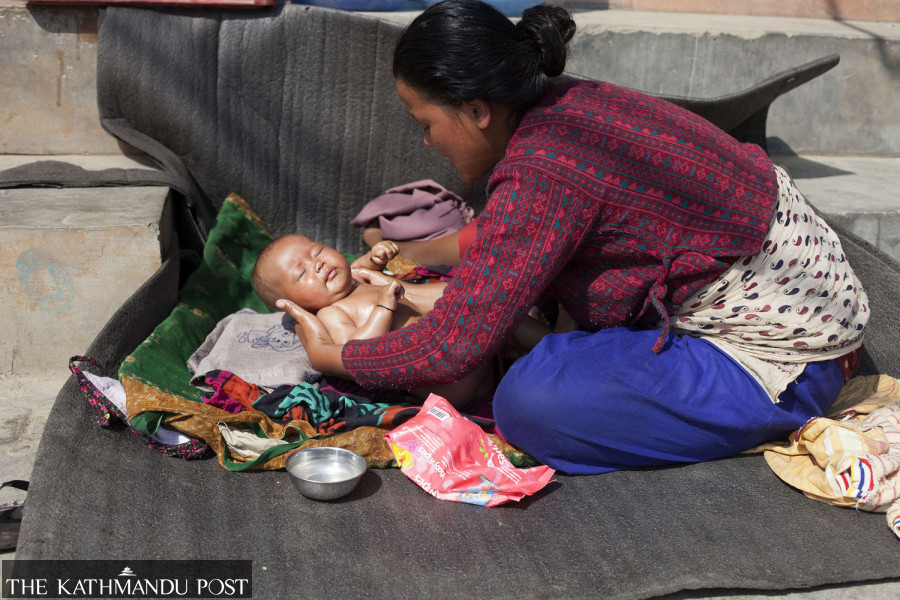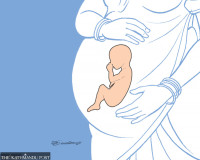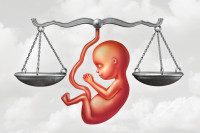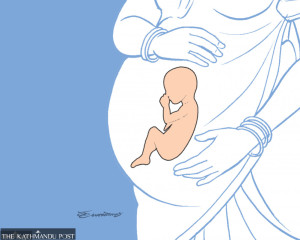Health
Antenatal care visits to be doubled to reduce maternal deaths, stillbirths
Pregnant women have to visit health facilities at least eight times for antenatal care, every 15 days, after 36 weeks. More than 1,600 nurses are hired to provide postnatal care at home.
Arjun Poudel
In a bid to lessen the existing maternal and child death rates, the Ministry of Health and Population has been working to double antenatal care visits from the next fiscal year.
The move comes after the ministry’s efforts to reduce the maternal and child mortality rates failed to save more lives of new mothers and their newborns.
“We have formulated the guidelines to double antenatal care visits and have been making necessary preparations to implement the decision from the start of the upcoming fiscal year,” said Nisha Joshi, a senior public health officer at the Family Welfare Division, under the Department of Health Services. “We will launch a drive to make pregnant women and their family members aware of the need for more antenatal care visits.”
To double antenatal care visits, pregnant women have to go to a healthcare facility at least eight times before delivery. The decision to double antenatal care visits is in line with the World Health Organisation’s recommendation.
According to the UN health agency, higher frequency of antenatal contacts by women and adolescent girls with a health provider is associated with reduced likelihood of stillbirths, which is because of increased opportunities to detect and manage potential complications.
“Eight or more contacts for antenatal care can reduce perinatal deaths by up to eight per 1,000 births, when compared to four visits,” the UN health agency said in its report.
Nepal has to reduce maternal mortality rate by 116 per 100,000 births within this year to meet one of the Sustainable Development Goals. The country has already missed its own 2020 target to reduce maternal mortality rate to 125 per 100,000 births.
The Health Ministry said that 105 women have died due to complications related to pregnancy as of Tuesday so far this fiscal year. In the previous fiscal year 2020-21, a total of 175 women died due to birth-related complications.
Current perinatal mortality rate (from 28 weeks to one week after birth) is 31 per 1,000 births. The country’s current neonatal mortality rate is 21 per 1,000 live births. The government has committed to lessen the number to 12 by 2030.
The WHO said increase in antenatal visits adds to maternal and fetal assessments done to detect complications, improve communication between healthcare providers and pregnant women, and increase the likelihood of positive pregnancy outcomes.
According to Joshi, pregnant women have to visit a health facility for antenatal care in 12th, 20th, 26th, 30th, 34th, 36th, 38th and 40th weeks of gestation.
“After 36 weeks, pregnant women need to visit the health facility every two weeks,” said Joshi. “A lot of pregnant women encounter severe complications in their third trimester, some even resulting in deaths. Frequent follow-ups by trained health workers could prevent complications and deaths of both the mother and her newborn.”
The Ministry of Health and Population has hired over 1,600 nursing staff throughout the country to provide postnatal care at home. The service is available in 74 districts except in Kathmandu, Lalitpur and Bhaktapur.
“Nursing staff visit the postnatal women at home, examine their health conditions and refer to health facilities if they notice something serious,” said Joshi. “As it is not possible for a majority of postnatal women to visit health facilities for care, we have hired trained nurses to provide the first three postnatal care visits at the new mother’s home.”
Of the total maternal deaths, 24 percent are during or after childbirth and 19 percent in the postnatal period, according to the data provided by the division.
The Health Ministry, which has been providing Rs800 allowance for the four antenatal care visits to the pregnant women from state-run health facilities, said it has informed the Ministry of Finance about the new provision (double antenatal care visits) and recommended increasing the allowance.
Nepal had reduced the maternal mortality rate from 539 for every 100,000 births in 1996 to 239 in 2016—for which the country had received the Millennium Development Goal award.
The health target under the UN’s Sustainable Development Goals is to reduce the maternal mortality rate to 75 for every 100,000 births by 2030.




 17.91°C Kathmandu
17.91°C Kathmandu














